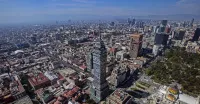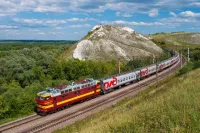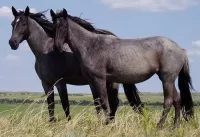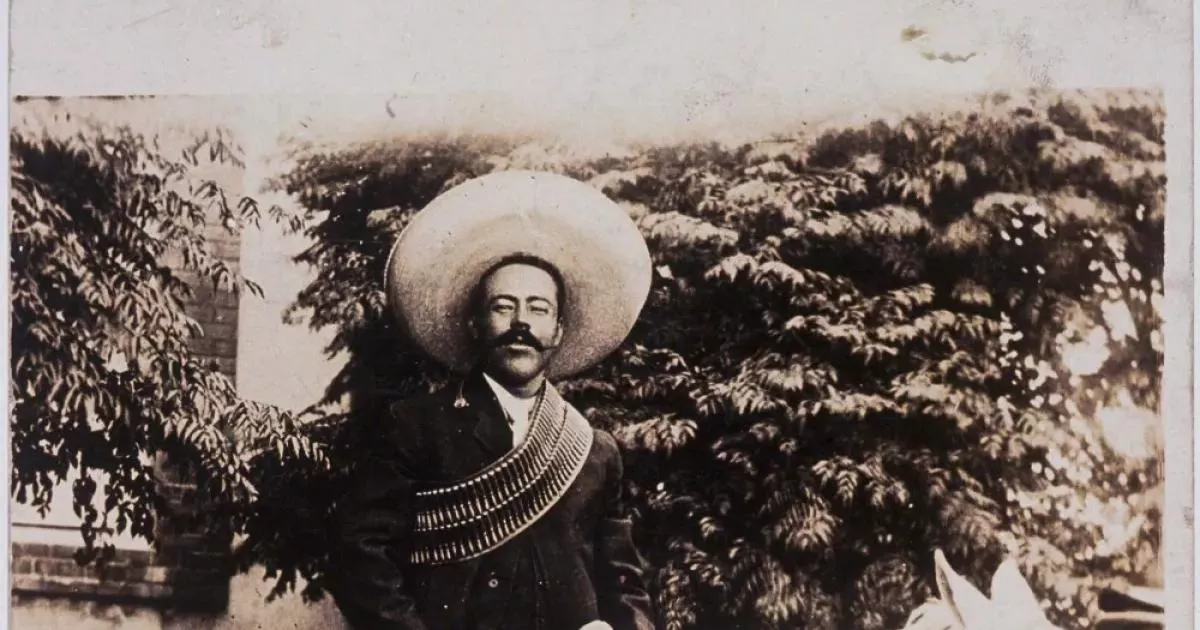Pancho Villa was a pivotal figure in the Mexican Revolution. He played a key role in ousting President Porfirio Díaz and bringing Francisco I. Madero to power in 1911. Following Madero's overthrow and assassination by General Victoriano Huerta, Villa joined the Constitutionalist Army under Venustiano Carranza to fight against Huerta. After Huerta's defeat in 1914, Villa split with Carranza and formed an alliance with Emiliano Zapata, advocating for land reform. Despite his advocacy for land reform, he did not implement these policies when he held power.
1902: Villa's Arrest and Forced Enlistment
In 1902, Villa was arrested for theft and assault and forced into the Federal Army. He later deserted.
1903: Villa Adopts His Nom de Guerre
In 1903, after killing an officer and stealing a horse, he took on the name "Pancho" Villa.
1909: Carranza and Diaz
In 1909, Diaz refused to appoint Carranza as Governor of Coahuila, which led Carranza to eventually switch sides and support Madero.
1910: John Reed's Graduation
John Reed graduated from Harvard in 1910 and later became a leftist journalist who wrote influential articles shaping Villa's image for Americans.
1910: Mexican Revolution Begins
The Mexican Revolution began in 1910 when Villa was 32 years old.
1910: Villa Joins Madero's Rebellion
Villa joined Madero's rebellion against President Díaz in 1910.
1910: Villa Meets Abraham González
Villa's perspective on banditry changed after meeting Abraham González, who convinced him he could fight for the people through his actions.
March 1911: Villa Meets Madero
Villa met Madero in person in March 1911. He was later promoted to colonel.
May 1911: Díaz Resigns
Díaz resigned and went into exile in May 1911 after a series of defeats.
November 1911: Madero's Presidency and Political Instability
In November 1911, Madero became president but his decisions, such as dismissing revolutionary supporters and relying on the old power structure, proved disastrous. He also appointed Venustiano Carranza as Minister of War, a decision Villa strongly disapproved of.
1911: Villa and Orozco's Demands
Following the victory in 1911, Villa and Orozco demanded land redistribution to revolutionary soldiers, which Madero refused.
1911: Villa Wins First Battle of Ciudad Juárez
Villa and Pascual Orozco defied Madero's orders and successfully captured Ciudad Juárez in 1911.
1911: Madero Rises to Power with Villa's Help
Villa played a key role in the revolution that brought Francisco I. Madero to power in 1911, ousting President Porfirio Díaz.
March 1912: Orozco's Rebellion
In March 1912, Orozco, a former revolutionary comrade of Villa, rebelled against Madero due to Madero's failure to implement land reform and feeling inadequately rewarded. Villa returned to military service under Madero to fight Orozco's rebellion, despite Orozco's appeal to join him.
June 1912: Villa's Imprisonment and Education
In June 1912, Villa was imprisoned in Santiago Tlatelolco Prison where he received education in civics and history from General Bernardo Reyes. While previously imprisoned at Belem Prison, he learned to read and write from Gildardo Magaña, a follower of Emiliano Zapata.
February 1913: Madero Ousted, Villa Joins Constitutionalist Army
In February 1913, General Victoriano Huerta led a coup against President Madero. Following this, Villa joined the Constitutionalist Army to oppose Huerta.
February 1913: Madero's Assassination
Madero was assassinated in February 1913 during the Ten Tragic Days.
February 1913: Madero's Assassination and Huerta's Presidency
Madero was assassinated in February 1913, and Victoriano Huerta became president. Villa was in the US during the coup.
March 1913: Huerta Consolidates Power and Villa Joins Carranza
Huerta consolidated power and had Abraham González, Villa's mentor, murdered in March 1913. Venustiano Carranza refused to recognize Huerta's authority and proclaimed the Plan of Guadalupe. Villa joined Carranza to overthrow Huerta.
April 1913: Villa's Return to Mexico
In April 1913, Villa returned to Mexico with a small group to fight against Huerta, Madero's usurper.
November 1913: Battle of Tierra Blanca and Bierce's Disappearance
Villa considered the Battle of Tierra Blanca, fought from November 23-24, 1913, his most spectacular victory. Ambrose Bierce, an American journalist, accompanied Villa's army and witnessed the battle, but disappeared in December 1913.
December 1913: Bierce's Disappearance
American journalist Ambrose Bierce disappeared in December 1913 after accompanying Villa's army. His disappearance remains unsolved.
1913: Villa's Rise to Prominence
Between 1913 and 1914, Villa gained international fame and achieved military and political success. He secured funds through various means, including forced assessments on hacienda owners and train robberies.
1913: Villa as Governor of Chihuahua
In 1913, Villa was elected provisional governor of Chihuahua. He recruited experienced generals to his military staff and continued achieving military success. His army was divided into two groups, continuing their campaign.
June 1914: Villa's Victory at Zacatecas and Huerta's Downfall
Villa's victory at Zacatecas in June 1914 significantly weakened the Huerta regime. Huerta fled Mexico in July 1914.
July 1914: Villa Breaks with Carranza
After Huerta's defeat in July 1914, Villa broke with Venustiano Carranza, the leader of the Constitutionalist Army.
July 1914: Huerta Flees Mexico and US Embargo
Huerta fled Mexico in July 1914 after Villa's victory at Zacatecas. Villa's advance was halted by a lack of coal and a US embargo on imports to Mexico.
August 1914: The Break Between Villa and Carranza
In August 1914, tensions between Pancho Villa and Venustiano Carranza escalated following the defeat of the Federal Army. Carranza entered Mexico City ahead of Villa, highlighting the growing rift between the two revolutionary leaders. The Pact of Torreón, a previous agreement meant to unite them, proved ineffective, as neither leader took its provisions seriously.
September 1914: Villa Breaks with Carranza
In September 1914, the divide between Villa and Carranza widened irrevocably. Despite attempts by Alvaro Obregón to mediate, Villa's distrust of Carranza and his belief in the need for immediate land reform led to a final break. Villa issued a manifesto, signaling his open opposition to Carranza's leadership.
1914: Division of the North Dissolved
Following the Battle of Agua Prieta in 1914, Villa's Division of the North was effectively dissolved. Many of his remaining troops accepted amnesty from Carranza, leaving Villa with a drastically reduced force.
1914: Villa and Zapata Occupy Mexico City; Carranza Consolidates Power
Following the retreat of Carranza and Obregón to Veracruz, Villa and Emiliano Zapata occupied Mexico City in 1914. However, Carranza, aided by Obregón's tactical skills and control of key ports, began to undermine Villa's image and consolidate his own power. Villa also suffered the loss of General Toribio Ortega to typhus.
1914: John Reed's Articles on Villa
John Reed published articles about Pancho Villa in 1914, based on his time with Villa's army. The articles portrayed Villa as a sort of Robin Hood figure.
1914: Villa's Popularity Peaks
Villa reached the height of his power and popularity in late 1914. The U.S. even considered recognizing him as Mexico's legitimate president.
1914: Villa's Continued Success
Villa's string of victories continued in 1914.
April 1915: Battles of Celaya and Trinidad
In April 1915, Villa's forces clashed with Obregón's army at the Battle of Celaya. Villa suffered a significant defeat, with heavy casualties. The fighting continued into June at the Battle of Trinidad, where Villa again faced major losses.
June 1915: Battle of Trinidad (continued)
In June 1915, the Battle of Trinidad concluded with another devastating defeat for Villa's forces. This marked a turning point in the conflict, significantly weakening Villa's position against Carranza.
October 1915: Villa's Defeat in Sonora
In October 1915, Villa's attempt to gain control of Sonora, a Carranza stronghold, ended in defeat. The loss of Rodolfo Fierro, a key officer, further weakened Villa's forces.
November 1915: Civil War Erupts
Civil war broke out in November 1915 when Carranza challenged Villa.
November 1915: Key Figures Executed; Ceniceros Defects
In November 1915, Carranza's forces captured and executed several key figures associated with Villa. Severianco Ceniceros also switched allegiance to Carranza, further weakening Villa's position.
November 1915: U.S. Support Shifts to Carranza
In November 1915, the United States shifted its support to Carranza, believing he was the key to stability in Mexico. This included allowing Carranza's troops to use U.S. railroads, a move that further angered Villa. Obregón's use of U.S.-powered searchlights in the Battle of Agua Prieta added to Villa's resentment.
1915: Villa on the Run; U.S. Recognizes Carranza
By the end of 1915, Villa was on the run with a significantly diminished force. The United States' refusal to sell him weapons further weakened his position, while the U.S. government's recognition of Carranza solidified Carranza's legitimacy.
1915: Villa Forced to Abandon the Capital
In 1915, a series of incidents involving Villa's troops in Mexico City led to his forced withdrawal, paving the way for Carranza's return. Carranza's control over key revenue sources contributed to Villa's weakening position.
1915: Villa's Popularity Peaks
Villa reached the height of his power and popularity in early 1915. He was viewed as a hero in Mexico for standing up to the United States.
January 1916: Attack on U.S. Nationals
In January 1916, Villa's men attacked a train carrying U.S. nationals, killing several. While Villa admitted to ordering the attack, he denied authorizing the killing of U.S. citizens. This incident further strained relations between Villa and the United States.
March 1916: Villa's Raid on Columbus, New Mexico
On March 9, 1916, Villa led a raid on Columbus, New Mexico. This attack on U.S. soil was likely motivated by Villa's perception of American interference in Mexican affairs.
1916: Villa Raids Columbus, New Mexico
Angered by U.S. support for Carranza, Villa raided Columbus, New Mexico, in 1916, hoping to provoke a U.S. invasion of Mexico.
1916: Villa Rebuilds His Forces
In 1916, Villa began rebuilding his guerrilla forces. After meeting with Juan Muñoz, he recruited more men, eventually commanding around 500 guerrillas. He then began planning an attack on U.S. soil.
1920: Villa Negotiates Amnesty
In 1920, Villa negotiated amnesty with interim President Adolfo de la Huerta and retired from politics in exchange for a landed estate.
July 1923: Death of Pancho Villa
Pancho Villa died in July 1923.
1923: Assassination of Pancho Villa
Villa was assassinated in 1923.
1976: Villa's Remains Reburied
In 1976, Pancho Villa's remains were reburied in the Monument to the Revolution in Mexico City.
Mentioned in this timeline

Christmas is an annual festival celebrated on December th commemorating...
Arizona is a landlocked state in the Southwestern U S...

Mexico City is the capital and largest city of Mexico...

Trains are a connected series of vehicles traveling on railway...

The horse scientifically known as Equus ferus caballus is a...
Texas the second-largest US state by area and population is...
Trending
4 months ago Lord Huron Concert Scenes and Horizon Hits with Shinedown and Gabby Barrett
1 month ago Elijah Wood's Lord of the Rings Salary Revealed: A Look at the $2.9B Legacy
27 days ago Nickeil Alexander-Walker's Growth: Signaling a New Era for the Hawks, Leveling Up Performance

1 month ago Nate Bargatze Plans Nashville Theme Park; Team Negotiates Site Locations

4 months ago NBA and NBPA support betting limitations; is Michael Porter Jr. a problem?

Lauri Elias Markkanen nicknamed the Finnisher is a Finnish professional basketball player currently playing for the Utah Jazz in the...
Popular

XXXTentacion born Jahseh Dwayne Ricardo Onfroy was a controversial yet...

Stranger Things created by the Duffer Brothers is a popular...

Candace Owens is an American conservative political commentator and author...
The Kennedy Center Honors are annual awards recognizing individuals and...

William Franklin Graham III commonly known as Franklin Graham is...

Ben Shapiro is a prominent American conservative political commentator media...
